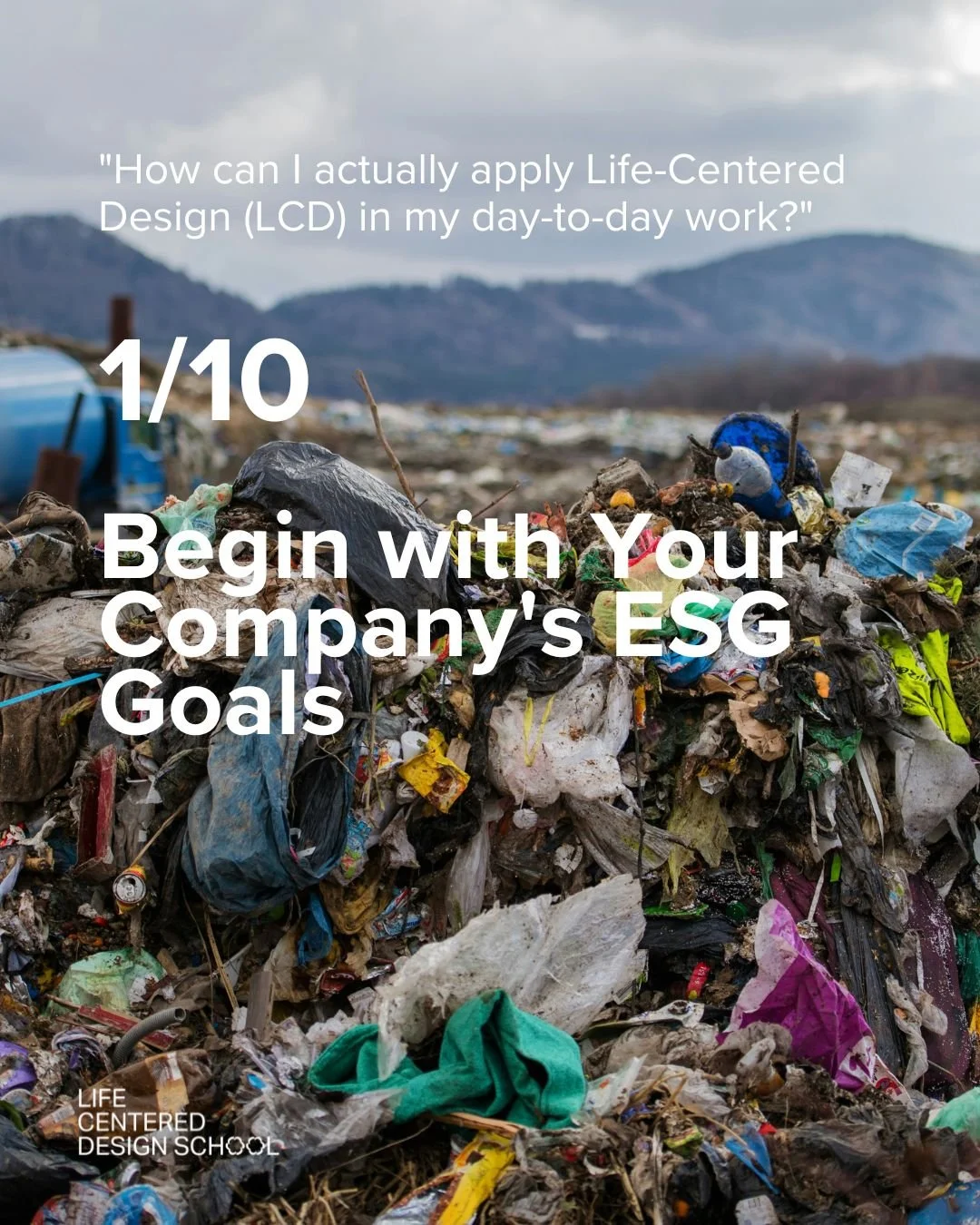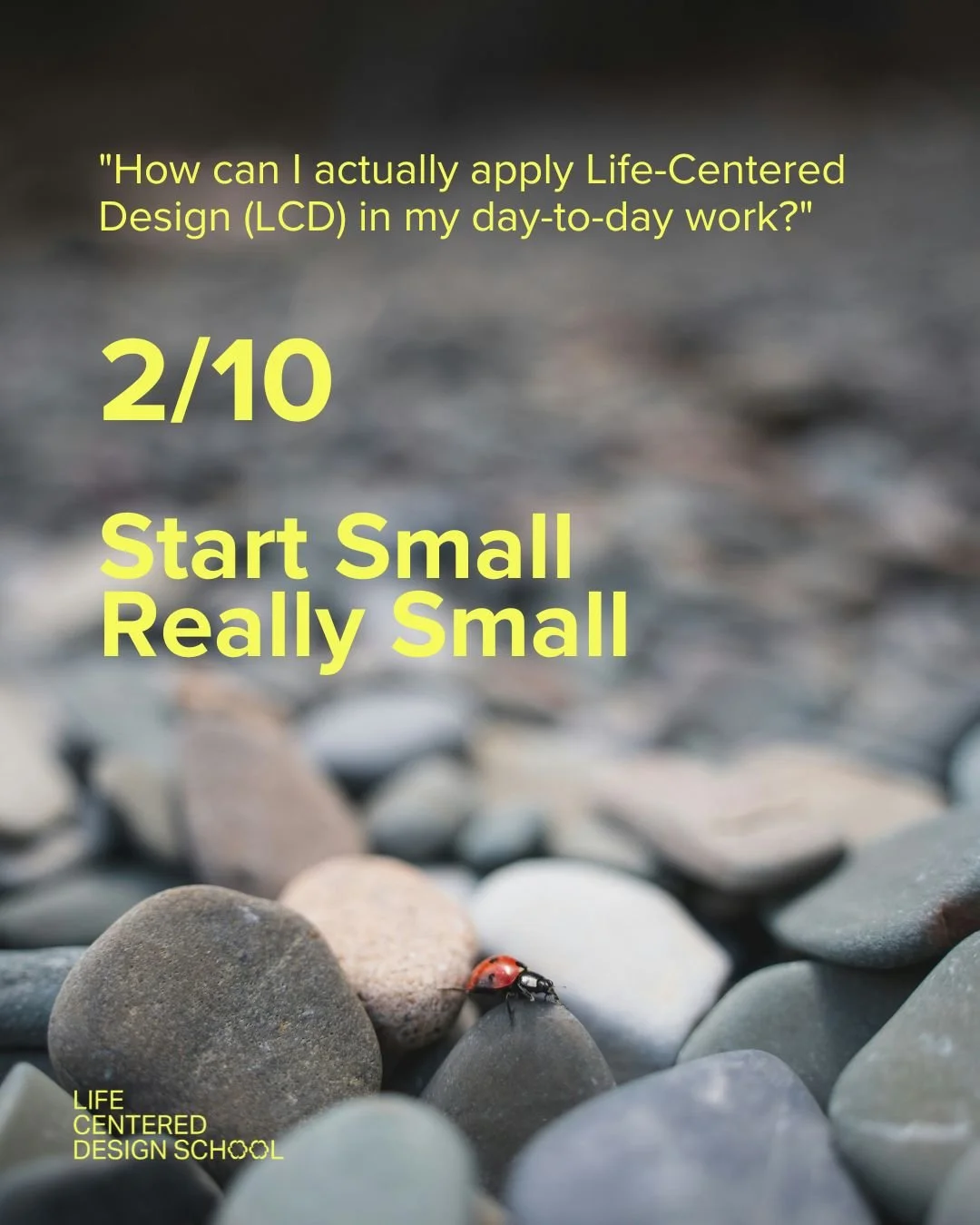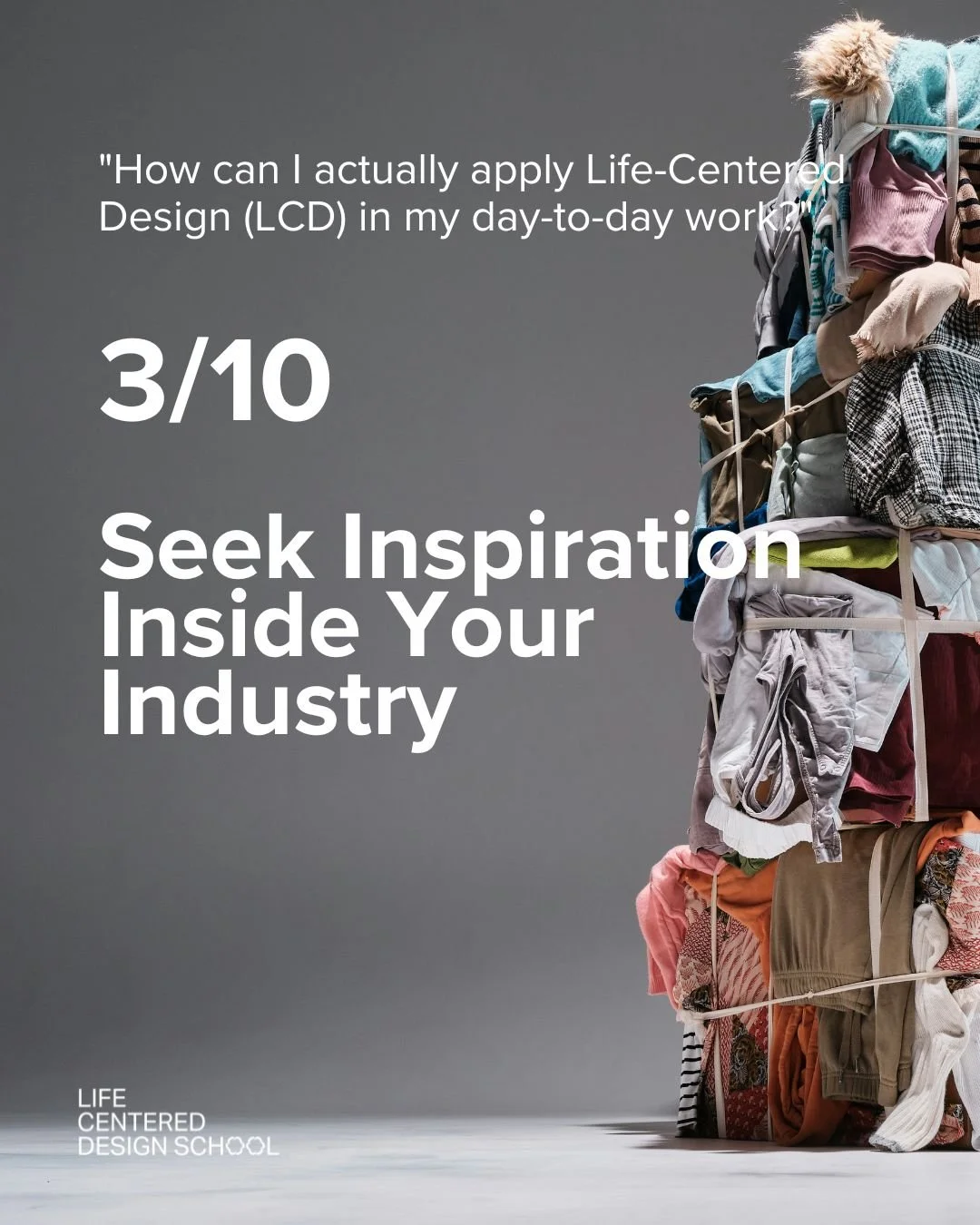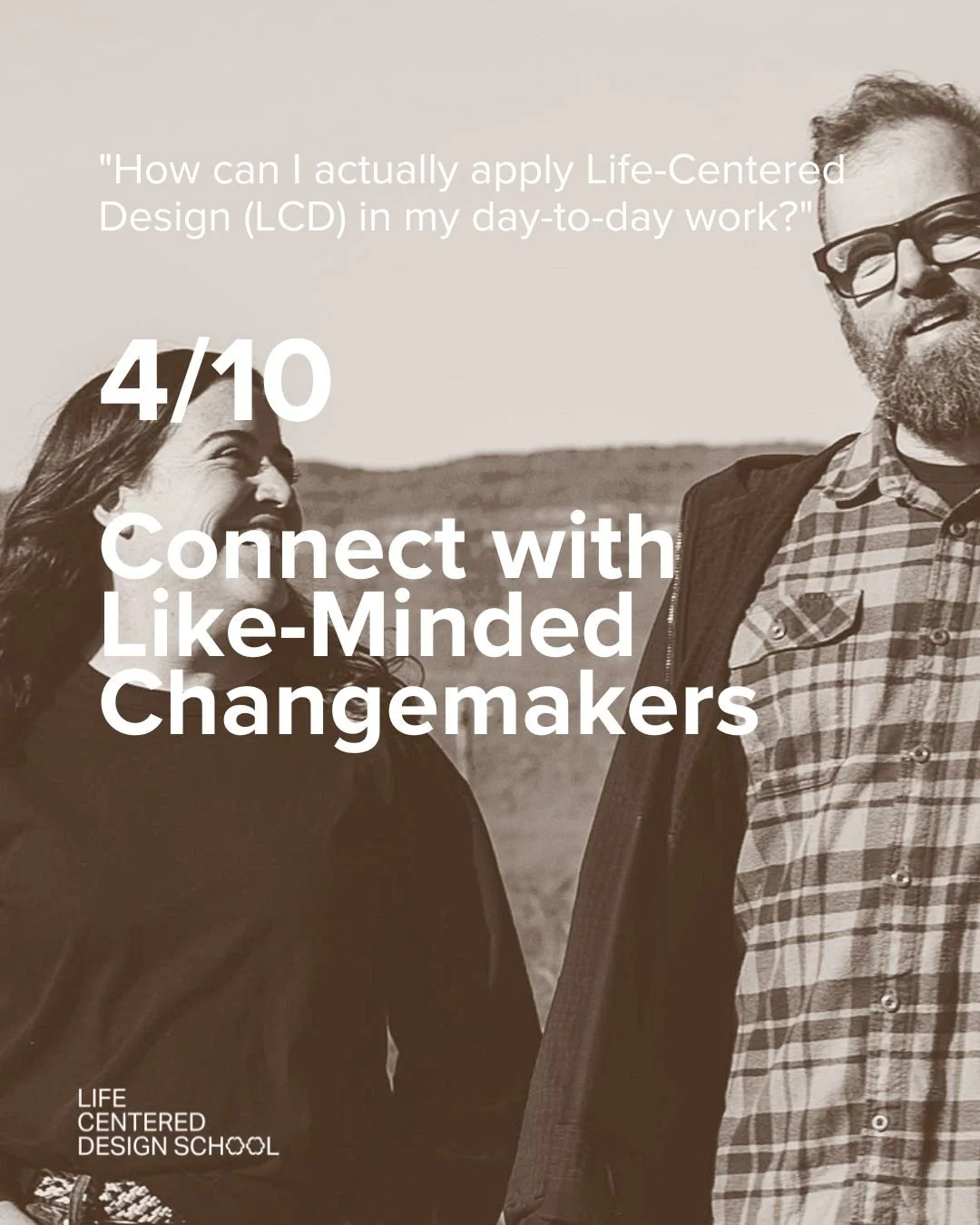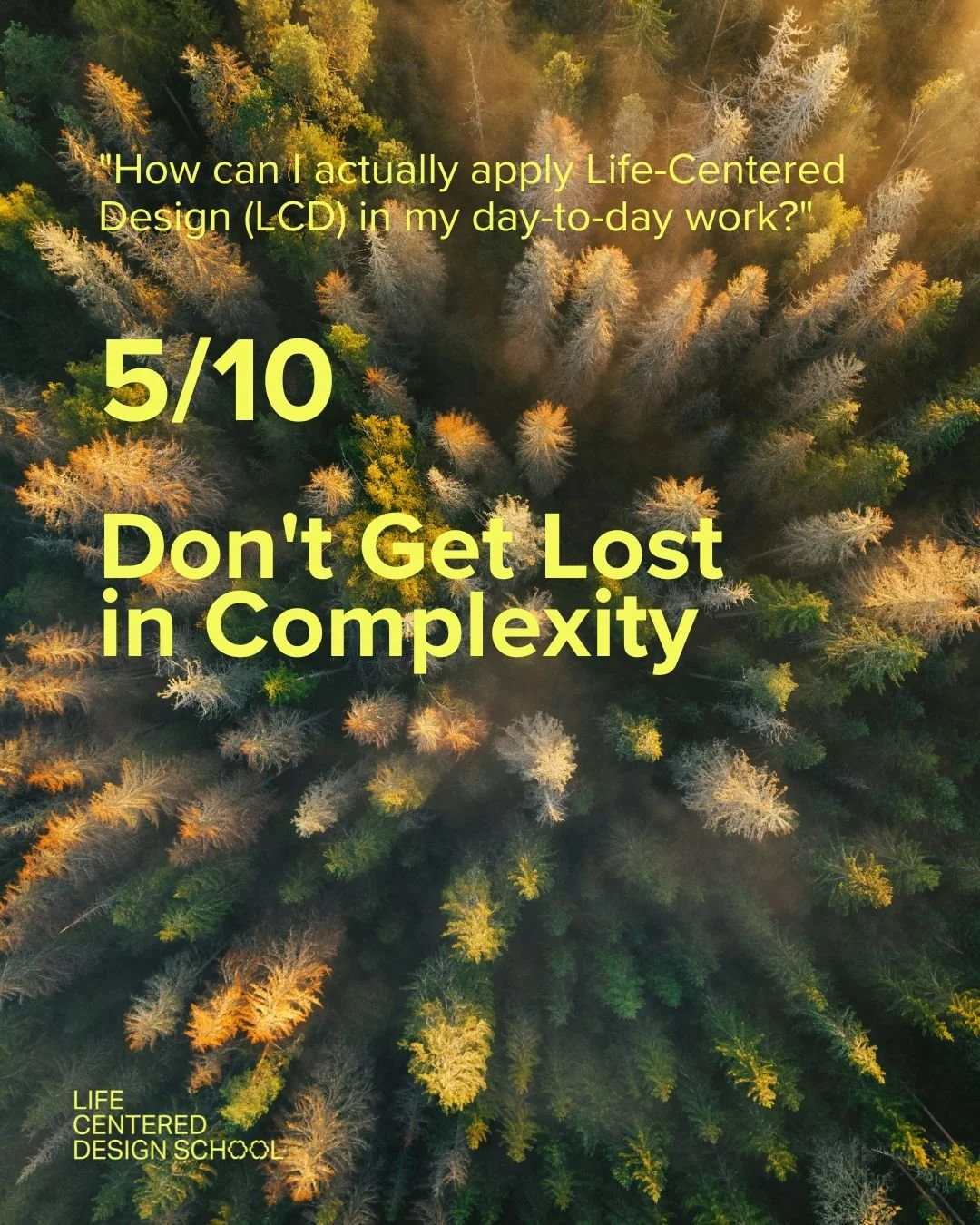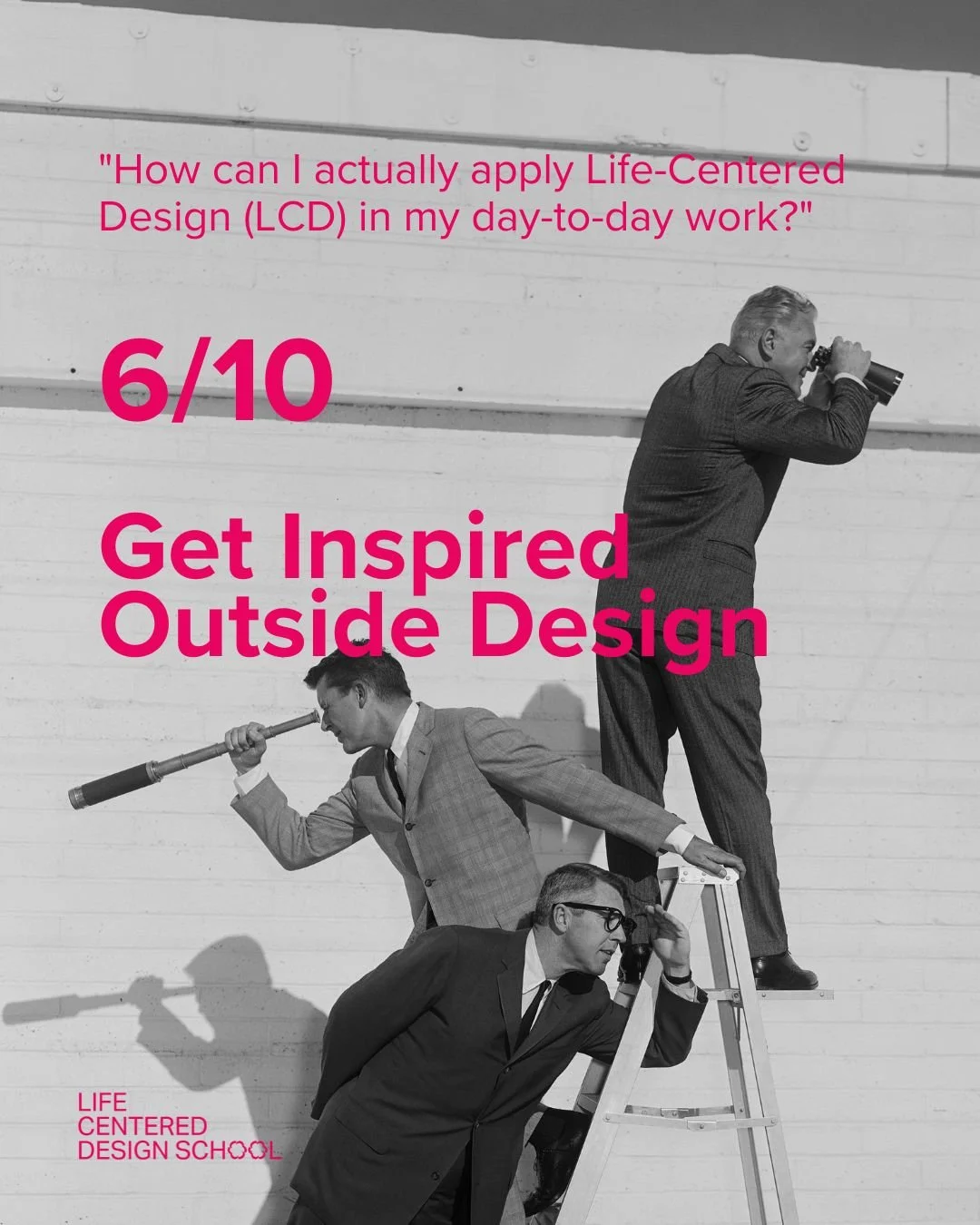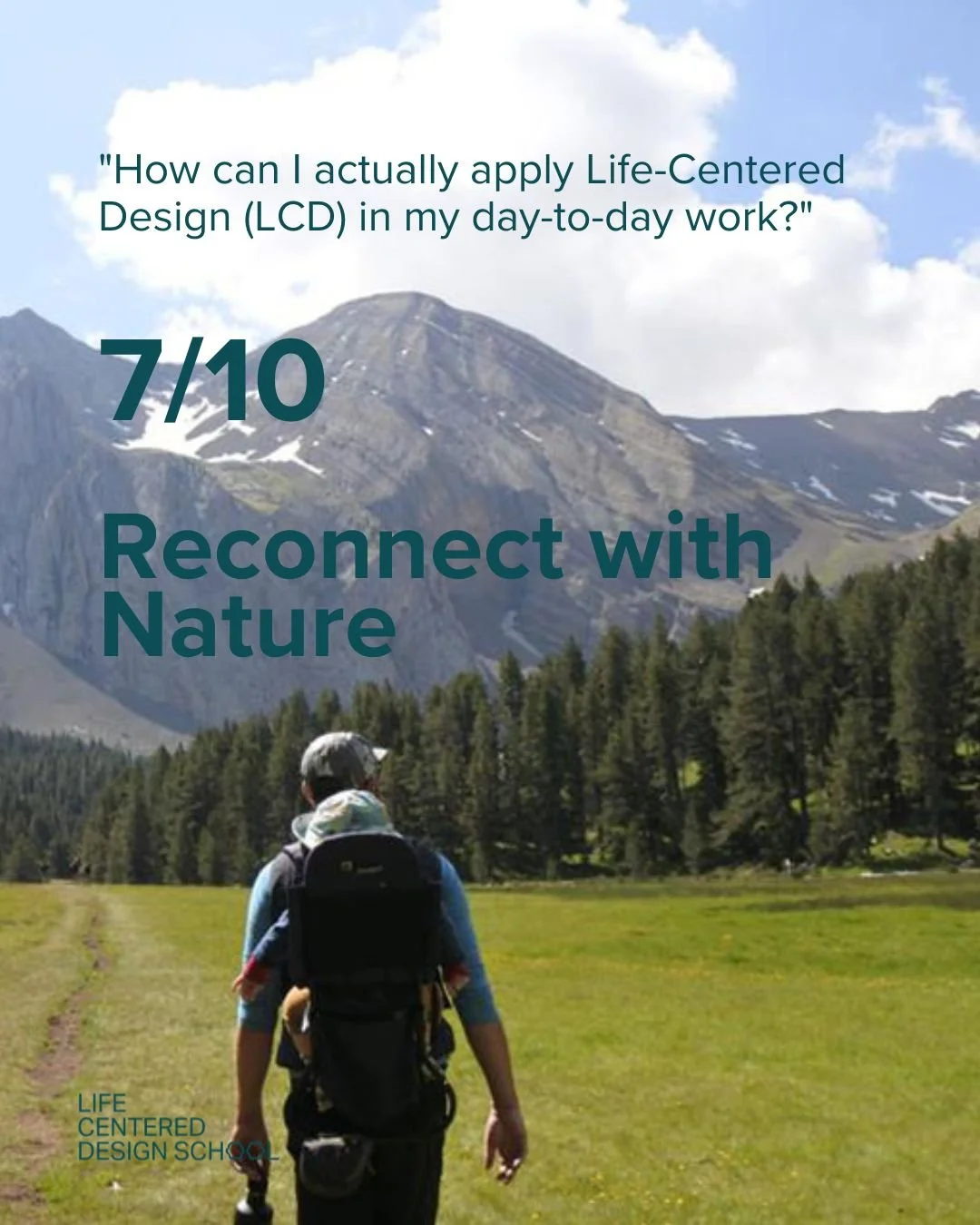10 Steps to Bring Life-Centered Design Into Your Daily Work
One of the questions I hear most is:
"How can I actually apply Life-Centered Design (LCD) in my day-to-day work?"
LCD is still an emerging concept. Because case studies are few and far between, it can feel a bit abstract, making it challenging to imagine how it fits into your work or your company's context. But here's the good news:
Life-Centered Design is very practical.
And it's gaining momentum. More designers and organizations are adopting regenerative, circular, and life-positive methods to build a better world. You can be part of that shift too. Let me help you begin with 10 concrete steps and methods you can start using right now.
1. Begin with Your Company's ESG Goals
Understand the ESG vision and mission of your employer or client. Every organization has values now many include Environmental, Social, and Governance (ESG) goals
When I start a new design project for a client, I begin by understanding the client's overall mission and vision, the context in which they operate, and their specific ESG goals such as reducing carbon emissions, promoting social equity, and fostering biodiversity. You can do the same with the employer you work for.
Once you understand the organization's ESG (Environmental, Social, and Governance) goals, consider how they align with your design work and the projects you are involved in. Additionally, engage your boss and colleagues by asking them similar questions, as this will encourage them to reflect on these important matters.
👉 If you are looking to align your design goals with your company’s ESG objectives, this new tool makes it simple to connect the dots. Download our new ESG tool below.
2. Start Small. Really Small.
Practice Life-Centered Design in a small context.
Over the last few decades, we have made the world complex and complicated. Fighting climate change alone can feel overwhelming; where do you start? To overcome this feeling, begin with small steps.
Take a water bottle, a white t-shirt, or an apple! Let’s explore their journey from creation to transportation, usage, and beyond. It's an exciting way to connect with everyday items and apply LCD at the same time.
Consider taking on a small design challenge at work! Experiment with one or two life-centered design methods, like defining a life-centered scope or creating a non-human persona. It’s a fantastic opportunity to innovate and learn! And ask a colleague to join.
3. Seek Inspiration Inside Your Industry
Find life-centered/ regenerative examples in the business you work in. Having concrete examples of life-centered or regenerative projects helps you envision how they could be applied in the organization you work for or the project you undertake.
Here are a few examples of companies that take a holistic and/ or circular approach to doing business
Cosmetics brand Lush has a wide network of regenerative suppliers that deliver sustainable and regenerative ingredients for shampoos and makeup. Forestwise in Indonesia is one of those suppliers. They work with a concept called rainforest value
Fashion brands Mud Jeans are the world’s first circular denim brand. By applying the principles of the circular economy, we’re reducing our environmental footprint. Minimalism Brand is an innovative clothing brand from Spain that wants to change the way of consumption and make sustainability accessible to anyone and any family with a life-centred approach revolving around their ecosystem.
I am not a Finance expert at all let alone that I know much about Regenerative Finance, but an hour-long online research, I came across three interesting projects Grassroots Economics works with in-community currency to boost economy in local Kenian neighbourhoods, Klima DAO is a blockchain concept that aims to increase prices of carbon-offsetting, to make this so expensive that companies are forced to take real climate action instead of offsetting their carbon. Bank for Good is a platform that helps you find banks, credit unions, and other financial institutions committed to a fossil-free future in the EU.
Sustainable Technology and clever products, as well as product-service systems, have always interested me as a former industrial designer. Fairphone delivers beautiful tech products, such as phones and headphones, in a regenerative and repairable manner. BlueMovement is a circular product-service organisation where you can take a subscription for washing, cooling, and most other household supplies.
These examples make LCD feel real and possible.
4. Connect with Like-Minded Changemakers
You are not alone. Sometimes it may feel that way, but there are many like-minded designers and other professionals out there who share similar values.
You can find them on social media platforms and online communities, or in your city at climate or social change events, such as hackathons, gatherings or perhaps a community garden or a repair café. Get out there and connect with them.
You can learn a great deal from your peers about climate change, about the resources they read and the methods they use in their regenerative or climate change efforts. This will also help you understand how your design skills can fit into your work. Be sure to ask them a lot of questions!
5. Don't Get Lost in Complexity
Don't get stuck in systems thinking. Systems thinking and systems design are powerful and great ways to understand how the ecosystem, value chain, and supply system of a product, service, or organisation work.
It helps you understand the complexity of a product in modern-day life. And this complexity is also a trap. It can feel overwhelming to take action when you see what happens to a product during manufacturing, transportation, use, reuse, and discarding, and how it is detrimental to the planet and society. Our ecosystem mindmap is a simple way to explore systems.
Find the key elements in the systems that you can work on with your skills and knowledge, and start from there. Take action!
6. Get Inspired Outside Design
Look for unobvious inspiration.
Since I started with Life-Centered Design, most of my inspiration has not come from the design field. While I initially drew insights from fellow designers, I’ve found the most profound ideas in the wisdom of forest rangers, biologists, indigenous cultures, and the incredible thoughts of thought leaders, artists, entrepreneurs, educators, and even my wonderful neighbours in our quaint village. Remember, if you’re aiming to learn and grow, don’t hesitate to explore beyond your field—there's a world of insight waiting for you!
7. Reconnect with Nature
Go outside and connect with nature! Seriously! Sit by a tree. Walk without a destination. Nature teaches balance, pace, and perspective.
The one thing that taught me the most about myself and my design work since I moved to the mountains is spending time alone in nature. Being in nature by myself helps me reduce work stress; it clears my mind, makes me feel calm, and creates space for creativity. I connect with nature in various ways. Walking, standing still and listening to the sounds, mountain biking, swimming in rivers, and lying down on the grass. And one thing both Marcela Xirinachs and I discovered is that design sessions and strategic meetings outside in a natural environment flow better. Ask yourself how and where you can connect with nature.
Our Life-Centred design guide to slow down offers plenty more tips to help you connect with nature.Creativity needs space to bloom.
8. Act First. Explain Later.
Act, and ask for forgiveness afterwards. Life-Centered Design is an emergent concept, meaning that many of your coworkers or clients may be unfamiliar with it. The best way to convince them is to show how it works.
Create a systems map,
develop non-human personas, give nature a voice
illustrate the impact of the design on the company, community, and the planet by going outside.
Make something and show creative new outcomes that you designed through a holistic lens
Start with one thing, share it, and discuss it. It will require resilience from you and courage, but believe me, it will be worth it. This is what worked for Paola Miani
“What has worked for me is to learn one thing at a time and find opportunities to practice it without asking for permission. Then get feedback. Don’t wait to feel confident. The only way to build confidence is to learn by doing…”
9. Own Your Toolkit
Know which methods to use; you are the designer.
As a designer, you have a wealth of knowledge, methods, guides, and skills. Life-Centered Design adds a few to your already rich repertoire. Know when to use your repertoire and play with it. Be a designer, make prototypes. If clients, management or colleagues question what you do. Explain to them that you are hired to do your design work and that you need to use your toolbox to get the best results. Stand for who you are as a designer.
10. Just Start.
It will never feel perfect. The timing won't be ideal. But growth happens in motion, not preparation. Life-Centered Design begins with a single, brave step. And you're ready.
Start, just start! I understand that starting something new can feel daunting, but it’s in those uncharted waters that we truly grow and discover the beauty of life. Embrace the unknown, as it’s a fantastic opportunity to learn, connect with incredible people, and create positive change. Let me tell you two personal stories.
We are organizing a design festival in the Spanish Pyrenees for the very first time and that scares me and makes me feel doubtful. Will there be enough people? Will attendees like it? How are the logistics going to work out? etc. And you know what, I will only find out by starting and doing it. Another thing that scares me is talking into a camera and I know I need to start doing it more to be more comfortable.
What scares you about starting something new?
Bonus Tip: Stay Curious.
Do what designers do best. Embrace the designer's spirit! Stay curious and ask lots of questions:
why,
how,
can you explain this and that to me?
This approach uncovers valuable insights that empower you to apply life-centered design effectively. Let’s dive in and discover together!


